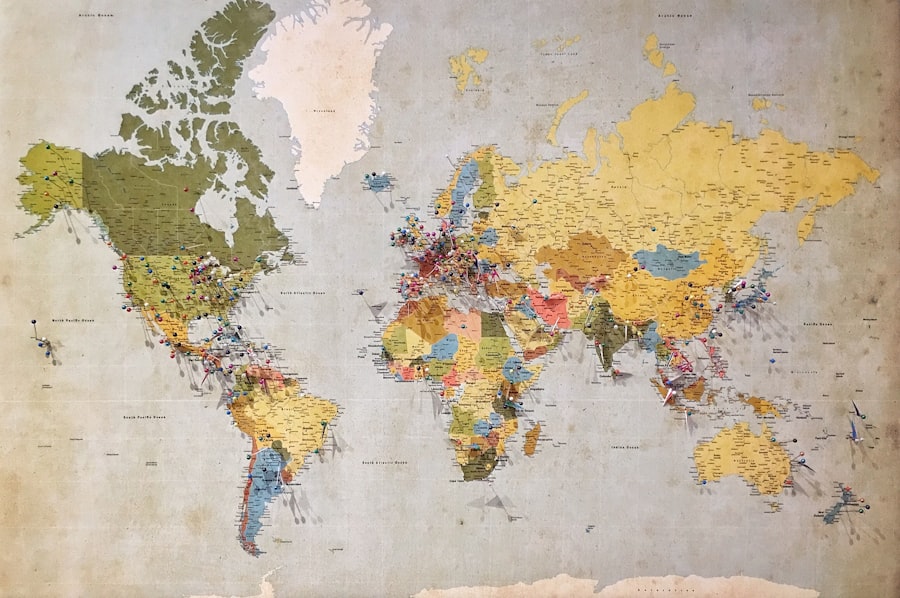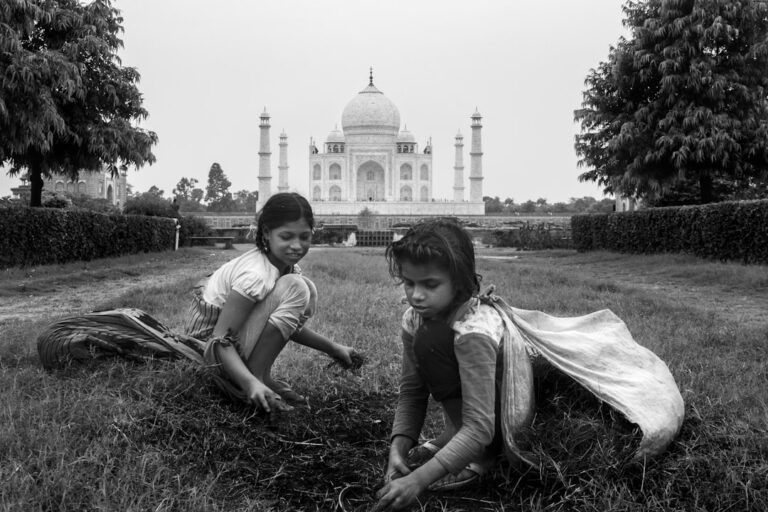The period following the decline of the Mauryan Empire, which reached its zenith in the 3rd century BCE, marks a significant chapter in Indian history. The Mauryan Empire, known for its vast territorial expanse and centralized administration under rulers like Chandragupta Maurya and Ashoka, laid the groundwork for subsequent political and cultural developments in the Indian subcontinent. However, by the end of the 2nd century BCE, the empire began to fragment due to a combination of internal strife, economic challenges, and external invasions.
This fragmentation led to the emergence of regional powers that would redefine the political landscape of India. The disintegration of the Mauryan Empire did not result in chaos; rather, it paved the way for a mosaic of regional kingdoms that thrived in their own right. These regional powers were characterized by their unique political structures, cultural identities, and economic systems.
The vacuum left by the Mauryans allowed local rulers to assert their authority, leading to a dynamic interplay of alliances, conflicts, and cultural exchanges. This period is marked by a rich tapestry of diverse kingdoms that contributed significantly to the evolution of Indian civilization.
Key Takeaways
- Post-Mauryan India saw the rise of powerful regional kingdoms after the decline of the Mauryan Empire, leading to a period of political and cultural diversity.
- The key regional powers in Post-Mauryan India included the Satavahanas, Kushanas, Shakas, and the Guptas, each contributing to the shaping of the Indian subcontinent.
- The regional powers employed various political and military strategies, including alliances, warfare, and diplomacy, to expand their territories and influence.
- The cultural and economic contributions of the regional powers included the promotion of trade, the spread of Buddhism and Hinduism, and the development of art, architecture, and literature.
- The legacy of the regional powers in shaping Post-Mauryan India can be seen in the lasting impact of their cultural, economic, and political achievements on the Indian subcontinent.
Rise of Regional Powers after the Decline of the Mauryan Empire
As the Mauryan Empire waned, various local dynasties began to rise, each vying for control over territories that had once been part of this vast empire. The fragmentation was not uniform; it varied across different regions of India. In northern India, for instance, the Shunga dynasty emerged as a prominent power, taking advantage of the political vacuum left by the Mauryans.
Founded by Pushyamitra Shunga around 185 BCE, this dynasty sought to restore Brahmanical traditions and counteract the influence of Buddhism that had flourished under Ashoka. In southern India, the decline of Mauryan authority coincided with the rise of the Satavahana dynasty. The Satavahanas established their rule around the 1st century BCE and became instrumental in promoting trade and cultural exchanges between the north and south.
Their reign marked a significant shift in power dynamics, as they controlled key trade routes and facilitated interactions with foreign traders from regions such as Rome and Southeast Asia. This period saw a flourishing of regional identities as local rulers sought to consolidate their power and assert their cultural uniqueness.
Key Regional Powers in Post-Mauryan India

Among the notable regional powers that emerged during this period were the Shungas in the north, the Satavahanas in the Deccan, and the Kanva dynasty that succeeded them. The Shungas played a crucial role in reviving Hinduism and promoting Sanskrit literature, while simultaneously engaging in military campaigns against neighboring territories. Their capital at Pataliputra became a center for cultural and intellectual pursuits, attracting scholars and artists.
In contrast, the Satavahanas were known for their administrative innovations and economic prosperity. They established a robust trade network that connected various parts of India with international markets. The Satavahanas also patronized Buddhism and supported its spread throughout their realm, leading to the construction of significant stupas and rock-cut caves, such as those at Ajanta and Ellora.
These architectural marvels not only served religious purposes but also became symbols of cultural synthesis during this era. Another significant power was the Western Kshatrapas, who ruled over parts of western India.
Their interactions with traders from distant lands enriched local traditions and contributed to a vibrant cultural milieu.
Political and Military Strategies of Regional Powers
The regional powers that emerged after the Mauryan Empire employed various political and military strategies to consolidate their authority and expand their territories. The Shungas, for instance, utilized a combination of military prowess and diplomatic alliances to secure their position.
This dual approach allowed them to maintain stability within their territories while expanding their influence. The Satavahanas adopted a more inclusive strategy by integrating diverse communities within their realm. They established a decentralized administration that allowed local rulers to retain some degree of autonomy while paying tribute to the central authority.
This approach not only fostered loyalty among local populations but also facilitated trade and economic growth. The Satavahanas were adept at leveraging their geographical position along trade routes, which enabled them to control commerce between northern and southern India. Military strategies varied significantly among these regional powers.
The Western Kshatrapas relied on cavalry and war elephants, which were crucial in battles against rival factions. Their military campaigns were often characterized by swift maneuvers and strategic fortifications that allowed them to defend their territories effectively. Additionally, they engaged in naval expeditions along the western coast, further enhancing their control over maritime trade routes.
Cultural and Economic Contributions of Regional Powers
The post-Mauryan period was marked by significant cultural and economic contributions from regional powers that shaped Indian civilization. The Shungas were notable patrons of art and literature, fostering a renaissance in Sanskrit literature and promoting classical dance forms. Their support for scholars led to the creation of important texts that explored philosophy, drama, and poetry.
The artistic expressions during this time reflected a blend of indigenous styles with influences from Hellenistic art due to interactions with Greek settlers. The Satavahanas made substantial contributions to trade and commerce, establishing a network that facilitated exchanges between various regions. They minted coins that bore inscriptions in both Prakrit and Greek, highlighting their multicultural approach to governance.
The flourishing trade routes enabled not only economic prosperity but also cultural exchanges with foreign traders, leading to an influx of new ideas, technologies, and artistic styles. Moreover, the architectural achievements during this period were remarkable. The rock-cut caves at Ajanta and Ellora stand as testaments to the artistic prowess of these regional powers.
These sites not only served as religious centers but also showcased intricate sculptures and frescoes that depicted scenes from Buddhist Jataka tales as well as Hindu mythology. The blending of artistic traditions during this time laid the foundation for future developments in Indian art.
Legacy of Regional Powers in Shaping Post-Mauryan India

The legacy of regional powers in post-Mauryan India is profound and multifaceted. These kingdoms played a crucial role in preserving cultural traditions while simultaneously fostering innovation and diversity. The Shungas’ revival of Hinduism laid the groundwork for its resurgence in subsequent centuries, influencing religious practices and philosophical thought across India.
The Satavahanas’ contributions to trade established patterns that would endure for centuries, facilitating economic interactions that connected various regions within India as well as with foreign markets. Their administrative practices influenced later dynasties, promoting decentralized governance models that allowed for local autonomy while maintaining central authority. Furthermore, the artistic achievements during this period set a precedent for future generations.
The synthesis of various cultural influences resulted in a rich artistic heritage that would continue to evolve through subsequent dynasties such as the Gupta Empire. The rock-cut caves and stupas became enduring symbols of India’s architectural ingenuity and spiritual aspirations. In conclusion, post-Mauryan India was characterized by a dynamic interplay of regional powers that shaped its political landscape, cultural identity, and economic prosperity.
The legacy of these kingdoms continues to resonate in contemporary Indian society, reflecting a rich historical tapestry woven from diverse threads of tradition, innovation, and resilience.
A related article to Regional Powers in Post-Mauryan India is “Understanding Math AI: A Comprehensive Guide” which delves into the intersection of mathematics and artificial intelligence. This article explores how mathematical concepts are utilized in the development of AI technologies, shedding light on the intricate relationship between these two fields. To learn more about this fascinating topic, check out the article here.
FAQs
What were the regional powers in post-Mauryan India?
The regional powers in post-Mauryan India were the Satavahanas, the Sakas, the Kushans, the Pandyas, the Cholas, the Cheras, the Pallavas, the Guptas, and the Vakatakas.
What were the Satavahanas known for?
The Satavahanas were known for their contributions to trade and commerce, as well as for their patronage of Buddhism and Hinduism.
Who were the Sakas and what was their influence in post-Mauryan India?
The Sakas were a group of Central Asian nomads who established their rule in northwestern India. They had a significant influence on the culture and trade of the region.
What was the significance of the Kushans in post-Mauryan India?
The Kushans were known for their promotion of art and culture, as well as for their role in facilitating trade along the Silk Road.
What were the major dynasties in the southern part of India during the post-Mauryan period?
The major dynasties in the southern part of India during the post-Mauryan period were the Pandyas, the Cholas, and the Cheras.
What were the contributions of the Guptas and the Vakatakas in post-Mauryan India?
The Guptas and the Vakatakas were known for their patronage of art, literature, and architecture, as well as for their administrative and military achievements.






















+ There are no comments
Add yours